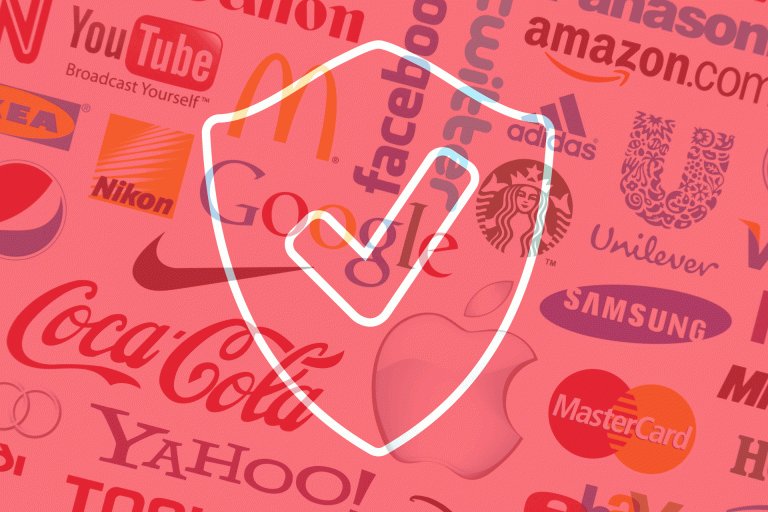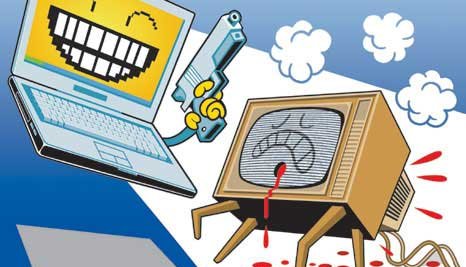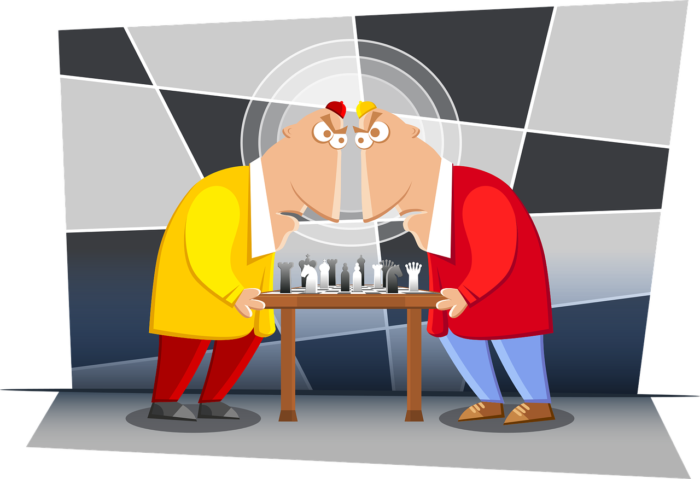Ad Fraud Cut by 83 Percent in TAG Certified Distribution Channels
A new study from The 614 Group has analyzed the impact of the Trustworthy Accountability Group (TAG)’s efforts on addressing fraud in the digital advertising supply chain.
Moreover, the level of fraud was lower by more than 83 percent compared to the industry average. The study looked at more than 6.5 billion display and video impressions in campaigns run through TAG Certified channels by three major media agencies: GroupM, IPG/Mediabrands and Horizon Media. Analyses by verification technology providers have found the levels of Invalid Traffic (IVT) in digital advertising average 8.83 percent for display inventory in North America (and rise to 12.03 percent when video inventory is included).
The Trustworthy Accountability Group (TAG) is the leading global certification program fighting criminal activity and increasing trust in the digital advertising industry. Created by the industry’s top trade organizations, TAG’s mission is to eliminate fraudulent traffic, combat malware, prevent Internet piracy, and promote greater transparency in digital advertising. TAG advances those initiatives by bringing companies across the digital advertising supply chain together to set the highest standards. TAG is the first and only registered Information Sharing and Analysis Organization (ISAO) for the digital advertising industry.

Source: Campaign UK
The 614 Group examined comparable rates of fraud for campaigns run through TAG Certified Channels in which multiple entities involved in the transaction – such as the media agency, buy-side platform, sell-side platform and/or publisher – had achieved the TAG Certified Against Fraud Seal.
“This study validates TAG’s approach and sets a clear path for marketers that want to protect their brands and ad spend from fraud,” said Mike Zaneis, President and CEO of TAG.“Fraud thrives in the dark crevices of the supply chain, so we knew that we had to get the legitimate participants in the supply chain to adopt the same high standards for this effort to be successful. When the industry links its arms and stands together, there is no place left for the criminals to hide.”
“The 614 Group have been leaders in promoting brand safety best practices and supporting the creation of standards and guidelines. Fraud has proven to be one of the most intractable issues in this area over the years,” said Rob Rasko, Managing Partner of The 614 Group. “We are pleased to release this groundbreaking research on the impact of TAG’s efforts to address the IVT challenge, and we believe the quantitative data combined with the timely first-hand analysis from the agency leaders who deal with fraud on a daily basis offer compelling insights on the impact of the TAG program.”
“The results of this study are extraordinary and demonstrate that the ‘war on fraud’ is winnable,” said Bob Liodice, CEO of the Association of National Advertisers. “Marketers must recognize that fraud, piracy and malware rob brands of their business building power. By joining and working with TAG — and its demonstrated process for success — brands can energize their marketing investments and elevate their potential for growth. I encourage all marketers and the entire community to engage this effective fraud fighting institution.”
“Fighting digital ad fraud is a centerpiece of the IAB’s and IAB Tech Lab’s work, and we are delighted that those efforts are paying dividends,” said Randall Rothenberg, President and CEO, Interactive Advertising Bureau. “By making TAG Registration mandatory for all IAB members and collaborating with TAG on our technical standards, we are assuring that the highest anti-fraud standards are extended across the industry, so advertisers will know that their money is well spent.”
The best media mix for your brand in 2017
The media market is changing under our eyes, each year bringing something new. It’s more than obvious that, even if you are representing a smaller brand, it’s not enough to rely on a website or social media page alone if you want to be competitive in the marketplace. Moreover, the media channels that used to work very good for you two or three years ago may very well not be the best ones to use anymore.
According to Initiative and their report Media Fact Book 2016, in Romania the TV continued to be in 2015 the rising engine of the media market, having a push of volumes of 7 percent compared to 2014 and reaching the EUR 212 million margin. Other channels that grew were the online (a boost of 12 percent and reaching EUR 57 million) and the radio (a 5 percent boost, until EUR 19 million). The OOH remained stable at EUR 28 million. Moreover, Initiative estimated that the media market would reach in 2016 EUR 351 million this year, following a 6 percent growth. The evolution on each channel is similar to the one in 2015 – the TV market will grow with 6 percent, the online with 12, the radio with 5, while the OOH will remain the same and the print would continue to drop still with 10 percent. In this context, the approaching of the digital next to the TV in the consumers’ preferences are, the amplitude that the mobile took, the influence of the multi-screening or the forever bigger importance of the content’s quality has over the rise of the media budgets.

source: Linkedin
With a well-chosen media mix, you can build the kind of name recognition and buzz for your company that isn’t possible with single-pronged approach. A mixture of owned, paid and earned media will help ensure your marketing efforts are reaching your target audience.
Consumers want brands that are useful and accessible, and most of all, entertaining. Marketers will continue to pull out all the stops to counter declining ad receptivity. In 2017, we’ll see more branded content and less regular advertising. Get ready for more native content, short and long form video, branded filters, and emoji and PR stunts. But it won’t end here. The specialists forsee that the marketers will forge ahead with new technologies such as 360 video, augmented reality, virtual reality and artificial intelligence (chatbots performing customer service and sales functions), making the landscape ripe for new creativity. Marketers will also closely monitor effectiveness as studies start to show which formats consumers find annoying and intrusive, particularly on mobile.
These advancements create new challenges for marketers. Far from a controlled consumer view of a brand (TV, outdoor, instore), marketers will face multiplatform, multi-device, in and out of walled gardens, all differently experienced by every consumer. Geotargeting will be seen as a commercial opportunity and Snapchat itself is using geofilters to let people know where to find a Snapbot vending booth. Brands will move quickly into customized/personalized creative content, delivered in a targeted way via programmatic buying. We will see more sequential content as marketers consider using retargeting for a more strategic and persuasive catenation of consumer messages.
In a media landscape of ongoing dramatic change, advertisers will more aggressively adopt multiple media alternatives to reach and connect with their audiences throughout 2017. Synergies will become more important than any single channel and the collective weight of all channels put together. Marketers will be focused on understanding the role each media plays within a broader plan and how they rub off to produce synergistic effects. The concept of synergies has been around for some time but what has changed is the planning aspect and the application of a discipline to the selection of channels to maximize its impact. Cross media studies conducted by Kantar Millward Brown show that globally 25% of media effectiveness has been attributed to synergies, and nearly 40% in APAC. These numbers are not only growing but increasingly we are seeing non-TV synergies emerging as advertisers and agencies start to get their heads around this. The two broad parameters needed to leverage synergies are – creative synchronization and media duplication and phasing.

source: Digital Land
„A “big idea” is important for creative synchronization to occur, but it’s also about adapting the message to the medium and following a common theme across a campaign. For example, it’s unlikely that a 30 second TV ad will work as well on YouTube or Facebook because these media have different characteristics. But they offer opportunities for forming different kinds of relationships that meet consumer needs at different times and occasions. Optimising media duplication and phasing can go a long way in driving synergies but as a first step, marketers will need to ensure that every medium has a role to play within the broader media mix. Roles will be in terms of driving ‘reach and or frequency’ or various aspects of how people think, feel and make decisions about the brand,” said Straford Rodrigues, Media & Digital Director, APAC at Kantar Millward Brown.
Therefore, every brand needs to create its media plan accordingly to its target, expectations and business plan. The strategy is more important than ever: setting clear objectives, finding the right opportunities, integrating your message and your true content, exploring, creating, producing and measuring.
Apart from the media planning itself, don’t forget the fact that the content is the KING and it needs to be as powerful, sincere and creative as possible.










